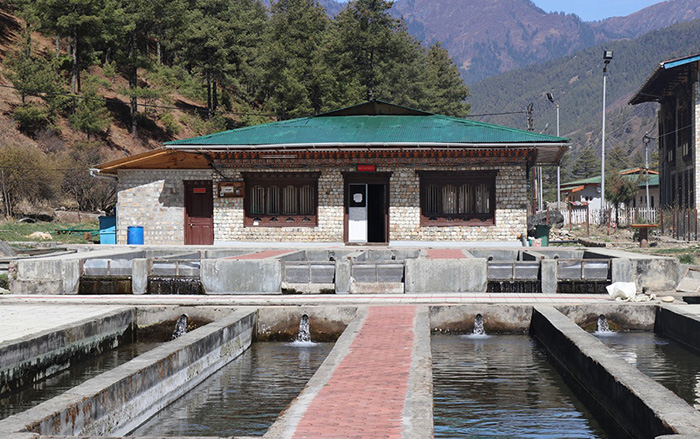National Organic Flagship programme expected to build feed mill
Phub Dem | Haa
The trout-breeding centre under the National Research Centre for Riverine and Lake Fisheries (NRCRLF) is still facing challenges in availing quality trout feeds.
The establishment of feed mill, as a part of National Organic Flagship programme (NOFP), is expected to solve the problem.
A research conducted by the Department of Agricultural Marketing and Cooperatives states that trout is one of the selected organic commodities for export market.
NOFP has estimated organic trout export of about 7MT.
According to livestock production supervisor, Jambay Tshewang, the centre would set up a feed mill to produce feed from organic ingredients available in the country.
“Although the center has initiated organic trout farming, production is expected by 2023,” said Jambay Tshewang.
NOFP has allocated Nu 15M to setup feed mill.
Besides, Nu 1M was allotted for the development of infrastructure for the organic trout farming for the 2019-20 fiscal year.
Programme Director of NRCRLF, Singye Tshering, said that it was difficult scale up trout business, as availing feed for cold-water species from neighbouring countries was a challenge.
But then, the communities’ religious belief and objection to trout farming is also an issue.
Jambay Tshewang said that there was a huge demand for rainbow trout in the neighbouring countries. “The country should take advantage of its rich cold water resources to enhance country’s revenue.”
For instance, West Bengal demands 100MT of trout in a week. But Singye Tshering said that the country lacked production and consistent supply. And there is huge demand from high-end hotels inside the country. “We don’t have to directly target export market. We can earn revenues from tourist hotels as well.”
The feeding centre is currently importing feed from Denmark.
Introduced in 2008, rainbow trout is reared in Damthang and Tshaphel in Haa today. Another farm in Paro is expected to come up soon.
To promote private trout farm, the department of livestock has set cost-sharing mechanism where the farmers are provided with free seed and feed for first season. The trout-breeding centre provides technical backstopping, pond designing, conduct feasibility studies, and train staff to build capacity in aquaculture.
Singye Tshering said that the trout-breeding centre was established to ensure sufficient fish production, as fishes in Bhutan mainly comprised of warm water aquaculture.
The centre was established with the introduction of Rainbow trout in 2008 with the aim to promote and develop fish culture based on coldwater fish species.


